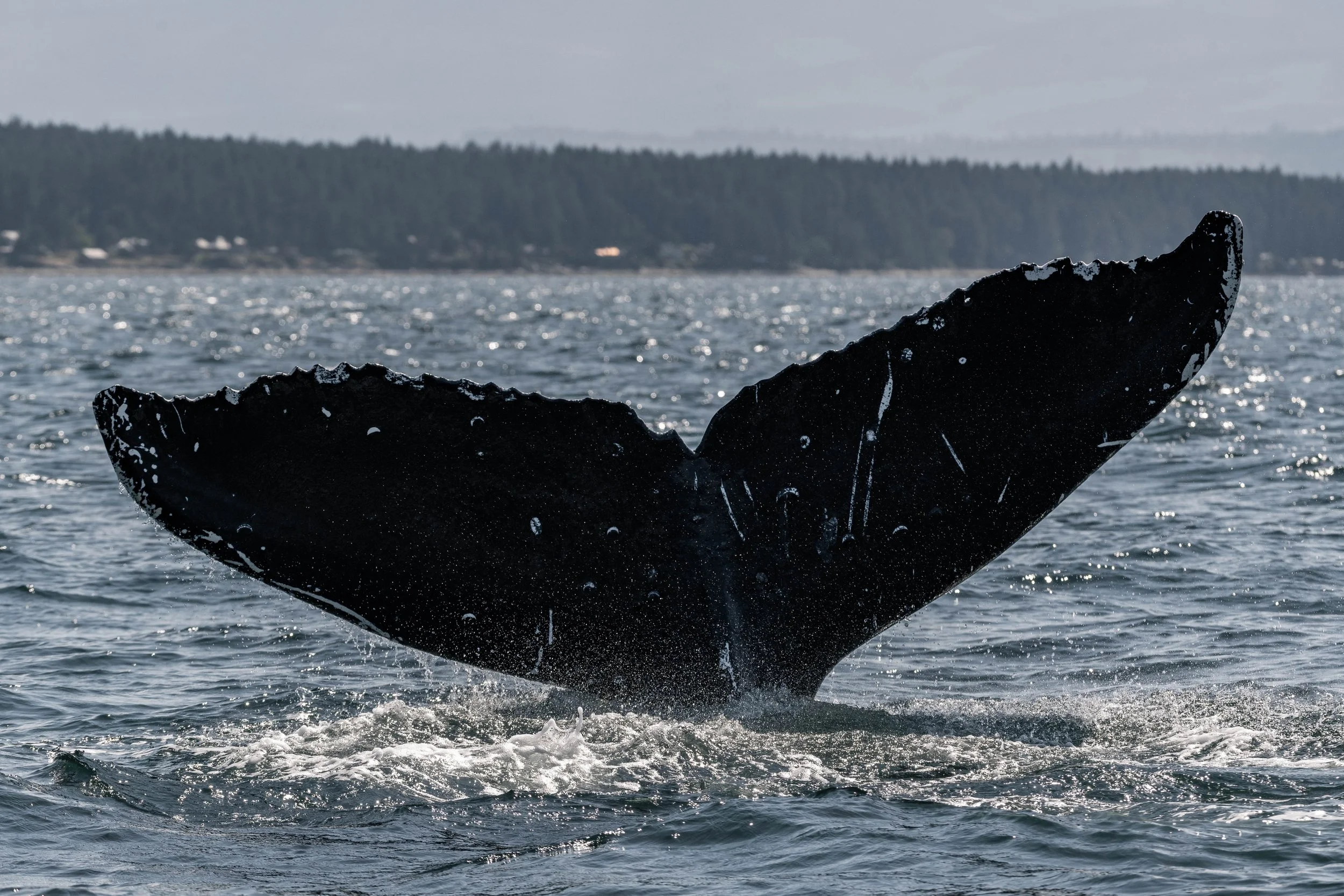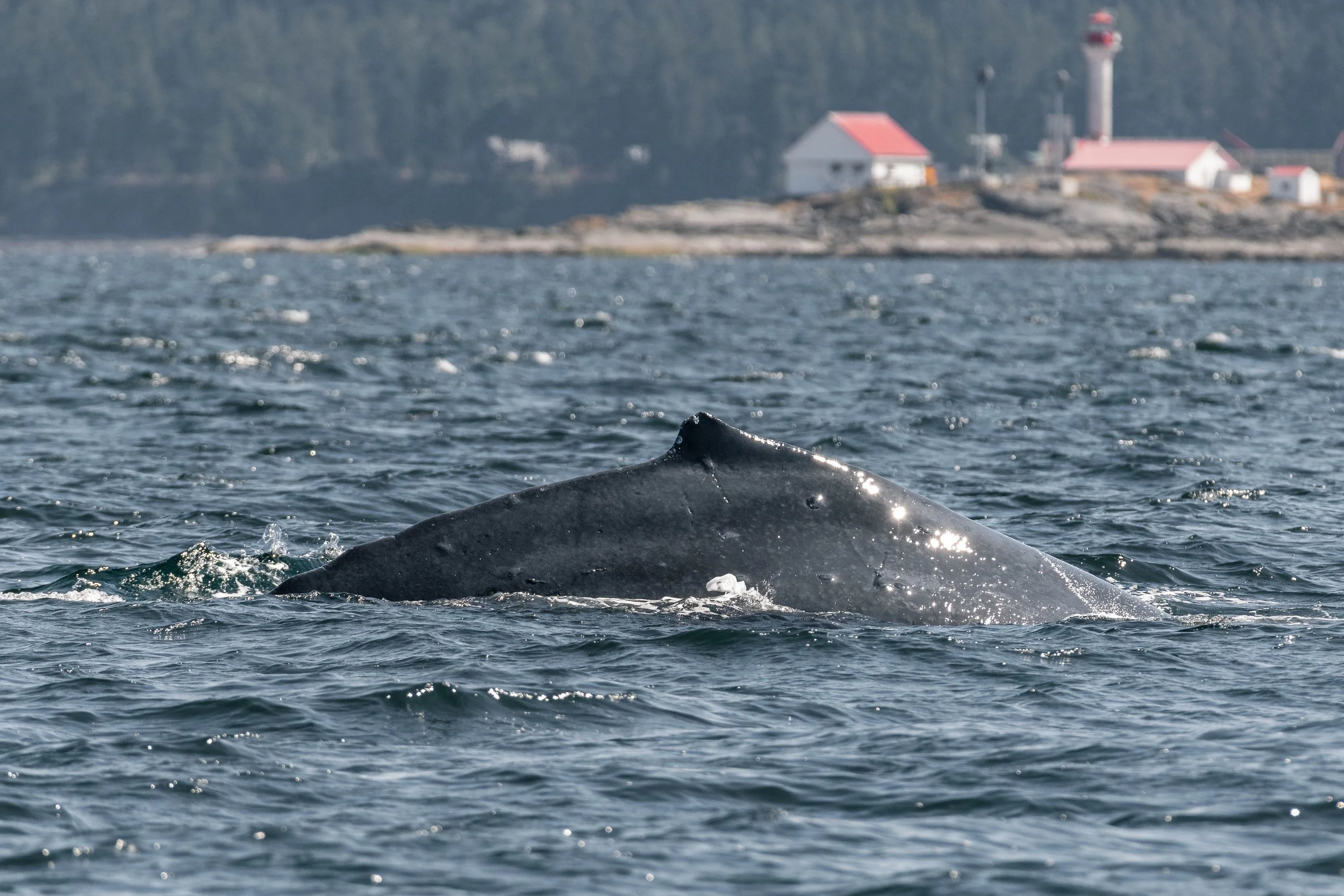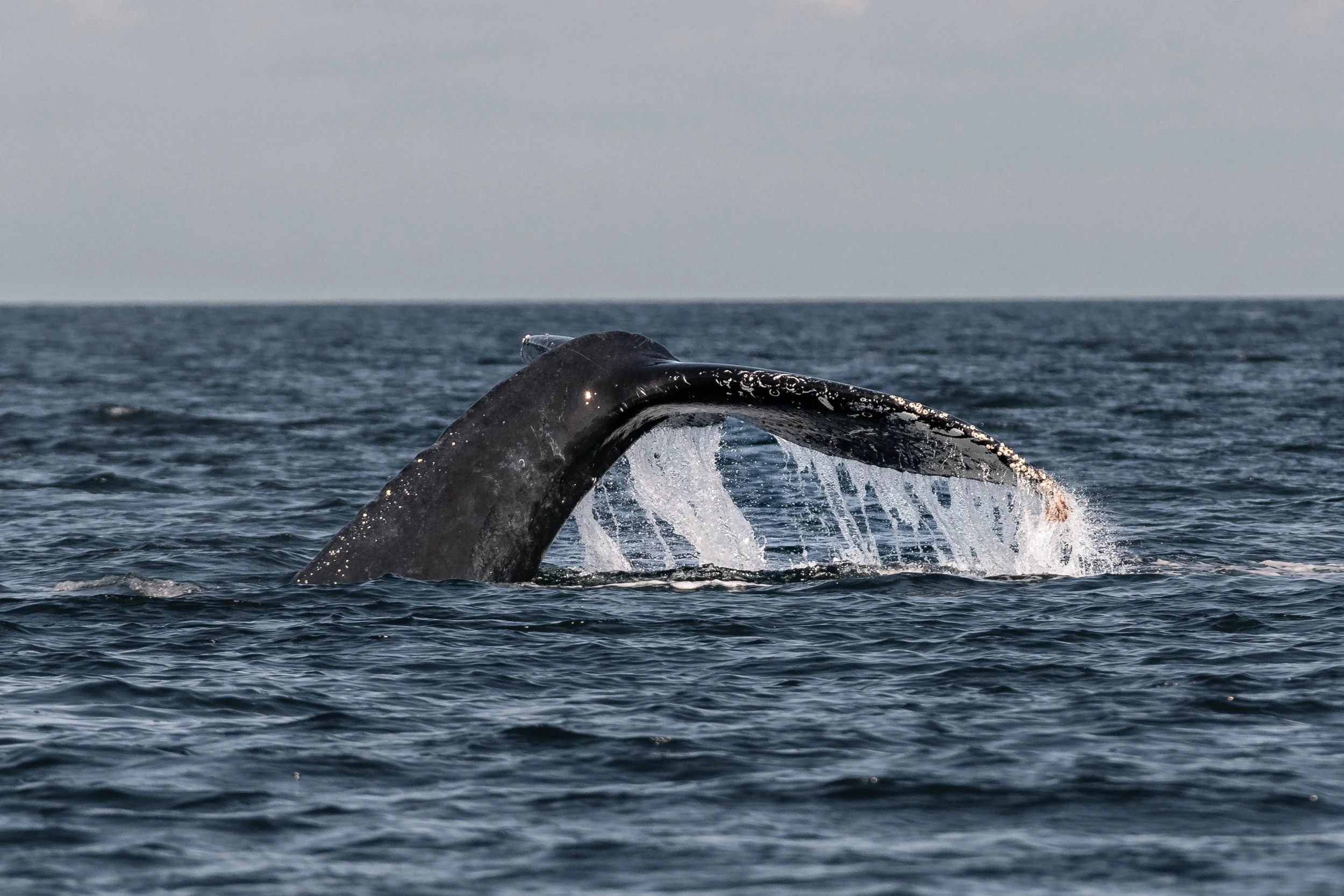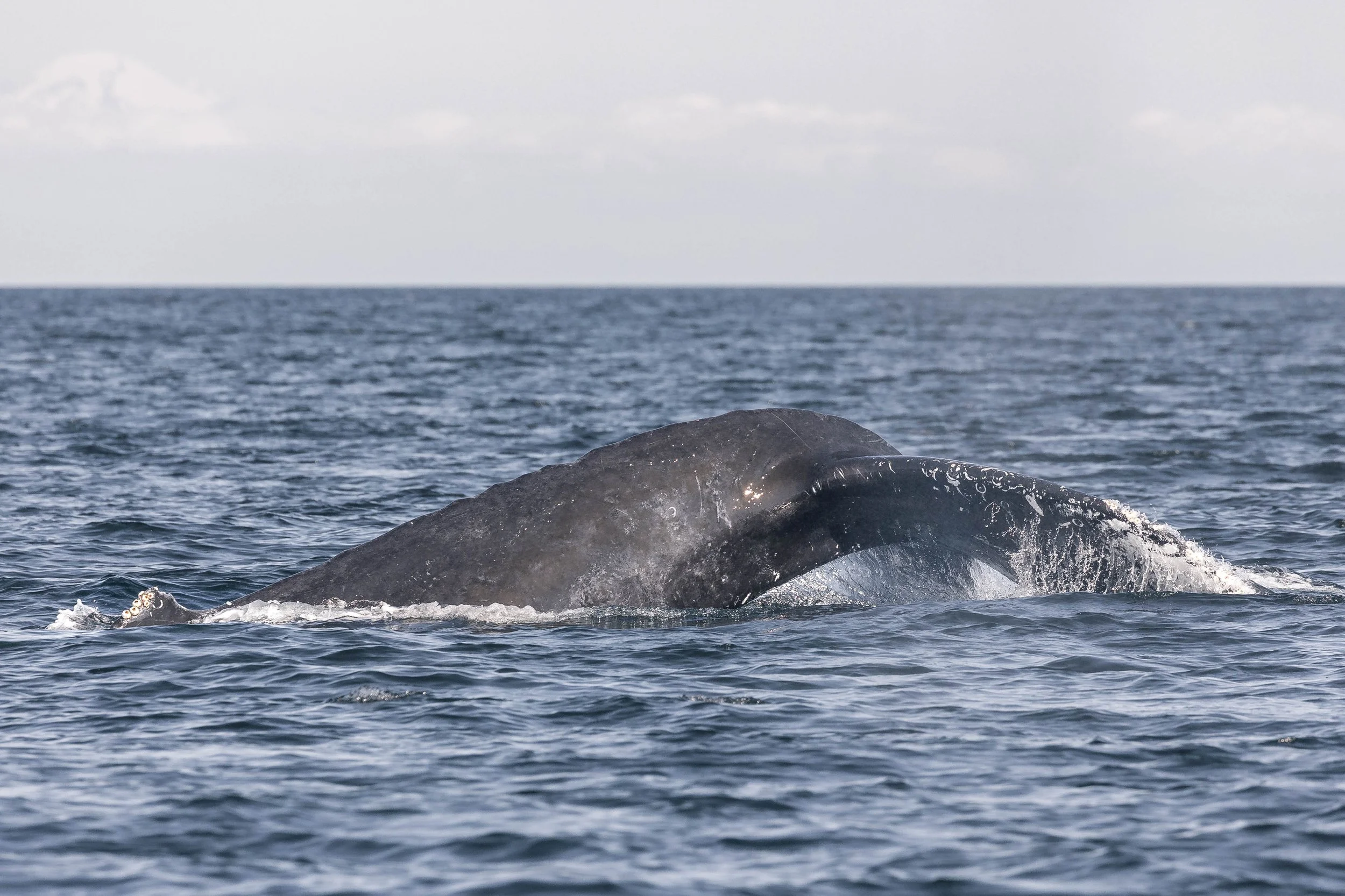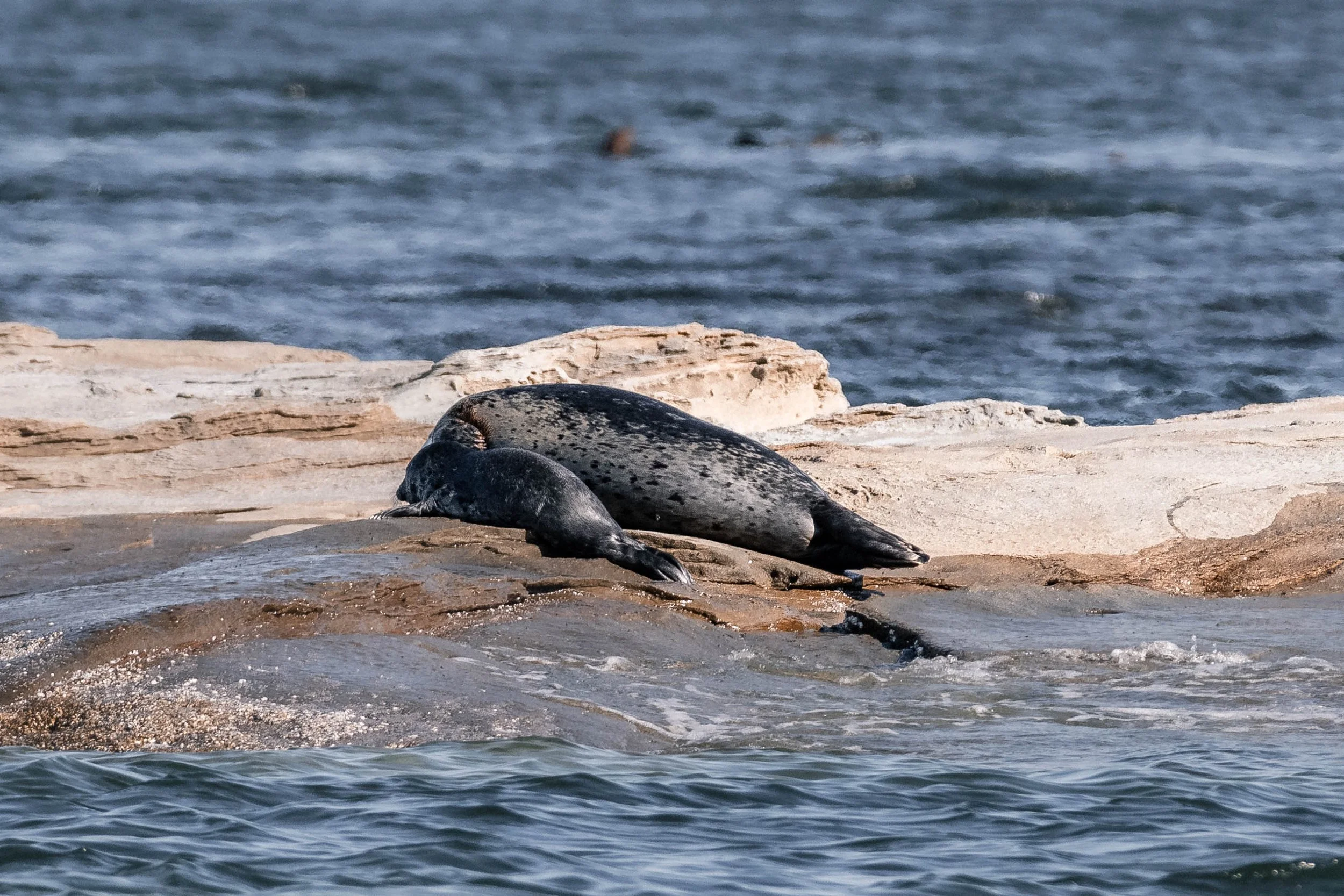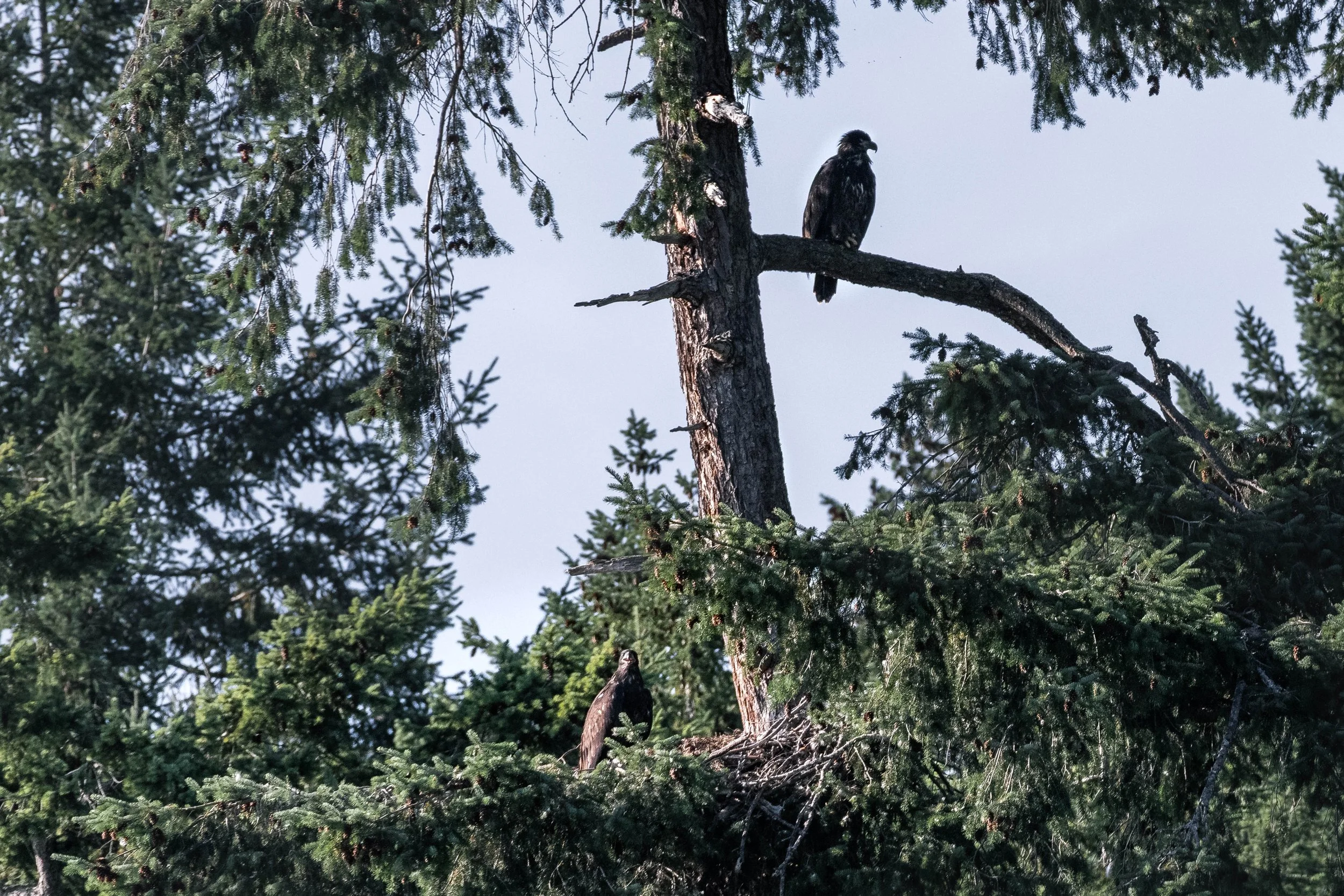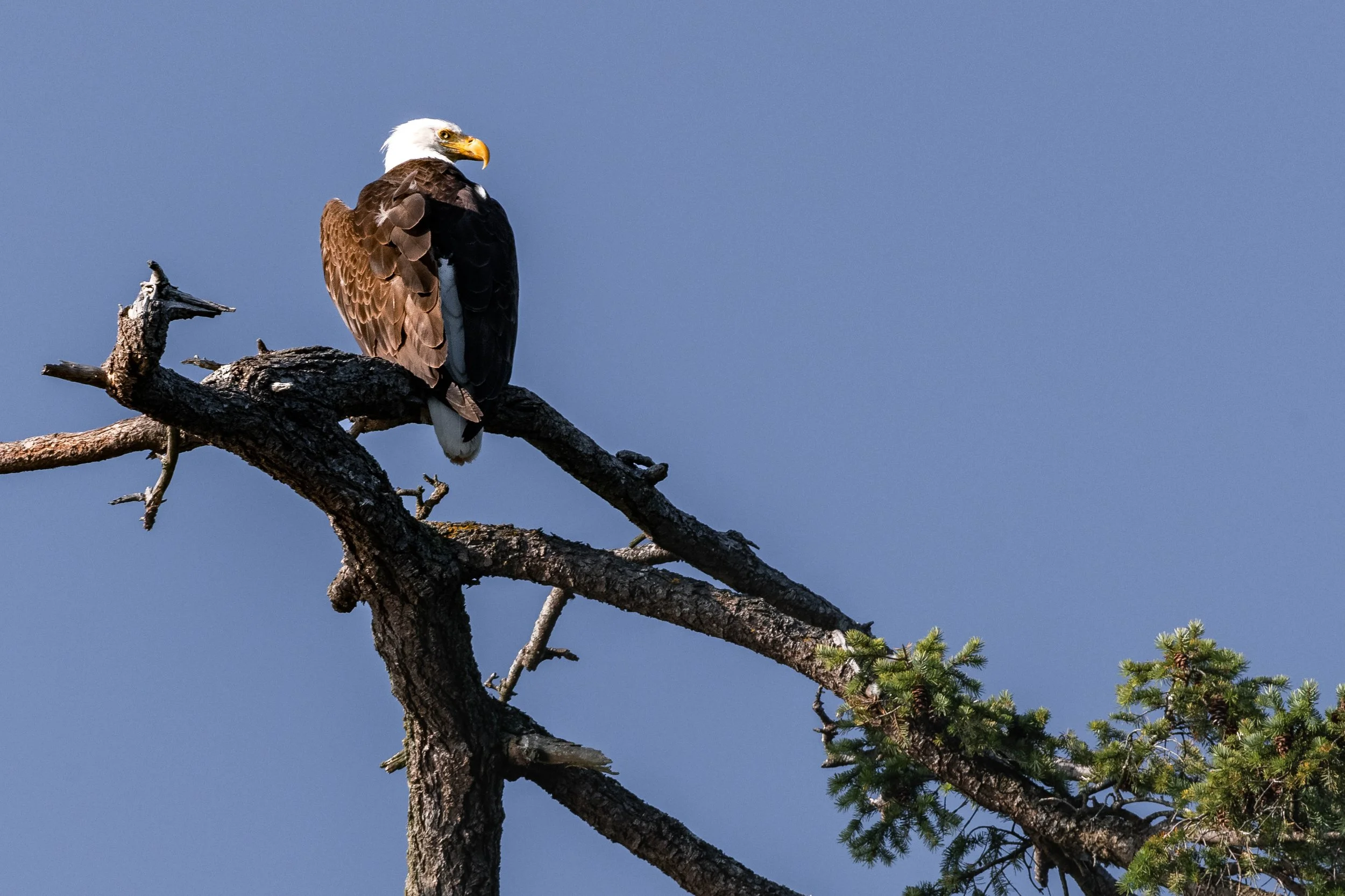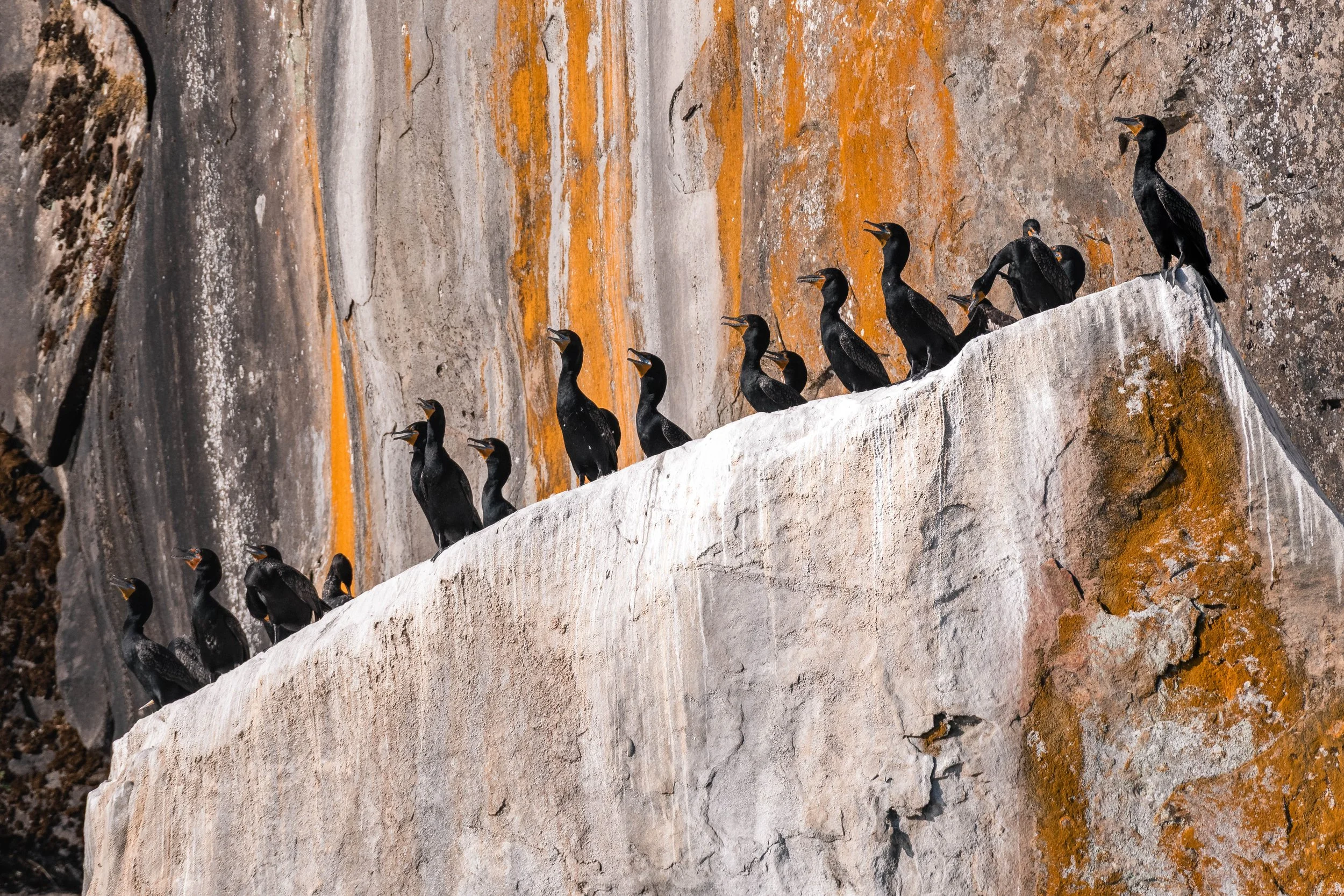July 10, 2025, 3:30 PM - A double Humpback feature!
A sunny Strait of Georgia is where we headed this afternoon on Kula, our semi-covered and Cascadia, our open vessel. We spotted a blow near Entrance Island, which is just around the corner from home. It was Chandelle (BCX2140), a humpback, that we have been seeing in the area frequently. Our best guess is they have been finding a lot of food around the area, and we can assume they had some calories to burn! When you weigh upwards of 80,000 pounds like a humpback whale, every movement burns an incredible amount of energy. From the powerful strokes needed to propel that massive body through the water to the explosive breaches, tail slaps, and cartwheels often seen at the surface, these behaviours are anything but effortless. Feeding dives, where whales plunge deep and lunge through dense patches of krill or smaller schooling fish with mouths wide open, require immense bursts of strength and coordination. Each motion demands thousands of calories, which is why humpbacks must consume up to 3,000 pounds of food a day (closer to 5000 if pregnant or nursing) during feeding season to maintain their energy levels and build up reserves for their long migrations and fasting periods. Chandelle was active, treating us to cartwheels and beautiful flukes! After spending the hour with our rambunctious whale, we got right back into search mode.
While searching the waves for our whales, we made a pit stop at a popular seal and sea lion haul-out we’ve nicknamed Stinky Rocks due to the stink our seafood-eating friends emit. With animals in such abundance and the heat this time of year, we get the full smelly experience!
Haul-outs, rocky outcrops or sandy beaches where seals and sea lions come ashore to rest or warm up are often accompanied by a rather pungent aroma. The strong, musky stench that hangs in the air around these sites is primarily due to a combination of factors. First and foremost is their diet: seals and sea lions are carnivorous marine mammals that consume large quantities of oily fish, squid, and other sea creatures. As a result, their breath, skin, and feces carry an intense fishy odour. Over time, these smells accumulate in the haul-out areas, especially since these animals often return to the same sites repeatedly.
In addition to their fish-heavy waste, sea lions and seals defecate and urinate freely at these haul-outs, leading to the build-up of excrement in the sun. Warm temperatures and constant moisture from sea spray further intensify the smell, creating the perfect conditions for a truly ripe atmosphere. The combination of rotting fish remnants, fecal matter, and the natural oils from their fur produces an unmistakable scent that is hard to ignore and impossible to forget! While the smell might be off-putting to humans, for these marine mammals, it's simply the scent of home. We left our smelly friends and continued searching.
Another blow north of Gabriola, this humpback was Moray (BCY1176)! Moray had made his way to us from his breeding ground in Mexico and was doing long dives during this encounter. Close to where we had found Chandelle earlier, furthering our assumption of good eating in the general area. When we see long dives like this, it is usually an indication he’s found some concentration of tiny goodies to dine on deep down below the surface. Moray was in no mood to be active like Chandelle, but still treated us to a fluke or two on one of his deep dives. With luck, the next time we come across Moray, he may have a full stomach and calories to burn, but today he seemed to be refuling after his incredible migration around 3000 nautical miles.
Photos by Hayleigh Hilbert and Aly Kohlman.
Chandelle’s fluke. Photo by Aly Kohlman.
Chandelle’s dorsal fin. Photo by Aly Kohlman.
Chandelle throwing their weight around. Photo by Aly Kohlman.
Chandelle beginning to dive. Photo by Aly Kohlman.
Chandelle’s dorsal fin. Photo by Aly Kohlman.
Going for a dive! Photo by Aly Kohlman.
Moray’s dorsal fin. Photo by Aly Kohlman.
Moray going down for a dive. Photo by Aly Kohlman.
Moray’s heavily barnacle-encrusted dorsal! Photo by Hayleigh Hilbert.
Moray beginning to dive. Photo by Hayleigh Hilbert.
A sleepy mother Harbour Seal and a young pup. Photo by Aly Kohlman.
What a squishy little baby! Photo by Aly Kohlman.
Fighting amongst the sea lions. Photo by Hayleigh Hilbert.
Standing tall and proud on Stinky Rocks. Photo by Aly Kohlman.
The side-eye is strong in this guys! Photo by Aly Kohlman.
Our Eaglet pair are starting to branch and leave their nests! Photo by Aly Kohlman.
An Adult Bald Eagle at the very top of the trees. Photo by Aly Kohlman.
A large group of Cormorants nestled against the Gabriola Cliffs. Photo by Aly Kohlman.
Our family of River Otters nestled up on the dock. Photo by Aly Kohlman.

